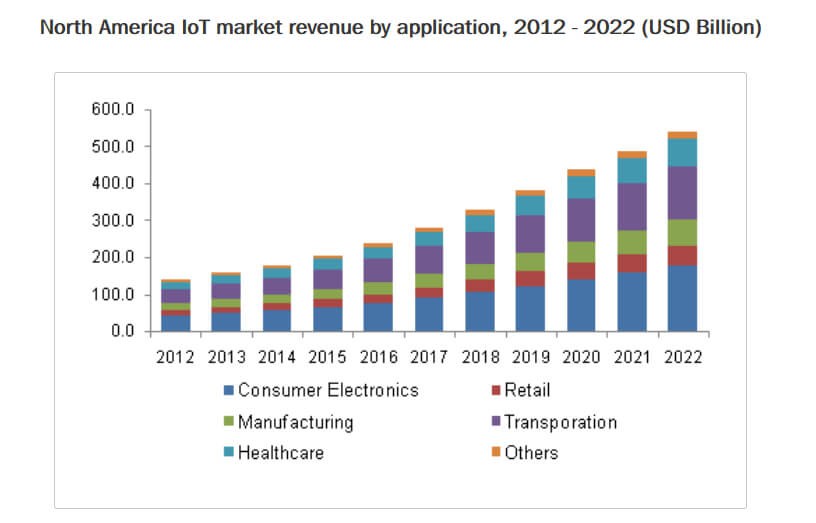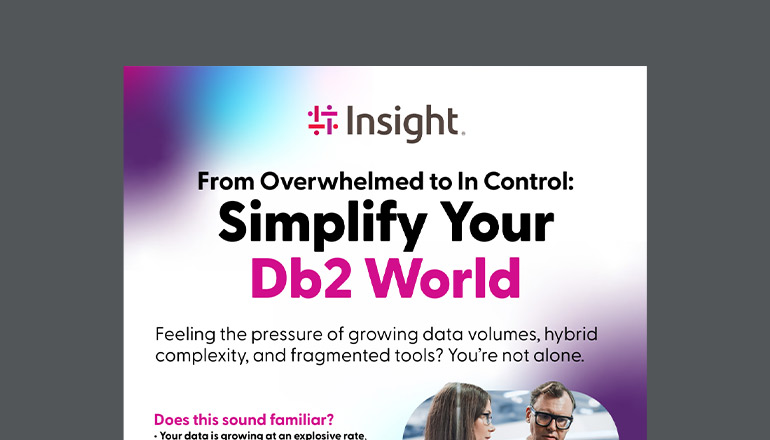Article
Navigating the Connected Solutions Market
With Turnkey IoT
New technologies and use cases are driving investments in the Internet of Things (IoT). What types of IoT solutions are available — and which is right for your business?
By Jeff Dodge / 20 Jun 2020 / Topics: Artificial Intelligence (AI) As a service Analytics Intelligent edge
Over the past few years, the democratization of machine learning, expansion of edge computing and optimization of the cloud have created an environment of increasingly unlimited potential for connected technologies.
As a result, the Internet of Things (IoT) market is rapidly expanding, with the number of connected devices projected to double and spending in the North American market forecast to surpass more than $500 billion by 2022.
Statistically, IoT adoption has been driven by demands for operational efficiency, differentiation and competitive advantage. But in 2020, new challenges associated with public health created urgent new use cases from symptom detection to crowd management.
As Intel's Brad Haczynski explained, this is an inflection point for IoT adoption.
"We don't know exactly what the world is going to look like when this is over, but we all know it's going to be very different," he told CRN. “New opportunities for technology will emerge, new disruptive use cases will emerge."
The case for IoT investment
While many organizations in the midst of digital transformation are pivoting to address the immediate need for a safe return to the workplace, others find themselves exploring the world of IoT for the first time. In either case, leadership teams may find themselves asking if now is the right time to start building a more connected business.
The short answer is yes. While we’re still in relatively early innings, the technology is available, and the market is mature enough that a well-executed IoT strategy is within reach and worth the initial investment.
The more in-depth answer warrants comparison to the question organizations grappled with back in 1999. As the internet began to take shape, decision-makers debated if and when they should invest in digitizing their business. Contrast against today’s capabilities and best practices, the types of web experiences being delivered back then were simplistic to say the least. But early adopters gained a critical advantage by giving themselves a place to iterate and develop their strategy.
The same can be said about IoT. The way we design and deliver these systems will continue to evolve over time, but the sooner your organization establishes a foundation, the sooner you can begin to build value.
Finding the right fit
When it comes to navigating the current market, the options vary greatly, depending on the scope of your goals and the size of your budget. A large enterprise looking to internally develop and deploy a bespoke IoT solution from the ground up might easily invest millions. But most organizations have neither the resources nor the desire to take this approach.
The good news is you don’t have to.
Unless you have a particularly unique need, there’s no reason to start building your connected solutions from scratch. There are a wide variety of offerings and models available to simplify the path to IoT.
Turnkey IoT
In an effort to help modern organizations reduce the time and cost of entry, tech companies, telecom providers and startups alike have launched a variety of off-the-shelf solutions over the past few years. Some have been designed for cross-industry issues such as energy management, supply chain monitoring and predictive maintenance. Others target specific industries such as agriculture, healthcare, manufacturing and retail.
These “IoT kits” are generally device focused, including a variety of pre-integrated sensors and hardware. Most come with some form of data ingestion software, some with additional analytics and user interface tools.
Turnkey IoT solutions can be beneficial especially for smaller organizations or those with very specific use cases. But they’re often closed systems that can’t be readily customized, so it’s important to ensure you select an offering that fits your needs right out of the box. While some vendors may offer an IT help line, your team or another provider will need to be able to support system integration and ongoing management in order to gain any meaningful insights.
IoT as a Service (IoTaaS)
As with other IT services, IoT providers are increasingly making the shift to more flexible and comprehensive as-a-service models. Pay-as-you-go models offer continuous access to software and related services while offloading processes that may not be considered core competencies for your business. This simplifies the management of connected devices while reducing the burden on your internal team, lowering risk and improving ROI.
Since vendors maintain ownership of the data platform, software and security patches are continuously kept up to date. Support teams are often available to help monitor systems, suggest improvements and optimize performance. This approach can yield many of the same outcomes as custom solutions, from improving visibility into operations to delivering innovative customer experiences.
When evaluating IoT as a Service, there are a few things to keep in mind. First, you’ll need to understand how data will be used and stored by your managed services partner. Consider your organization’s data security policies and any required regulatory compliance. If your company stores or processes personal health information or personally identifiable information, an IoTaaS approach may not be feasible.
As with turnkey solutions, most of these tools can’t be modified. Software providers often don’t have the capability or desire to customize their platforms or data flows so it’s important to start with something that matches your desired use case. These solutions may also rely on your internal IT team to procure and integrate hardware.
Custom IoT Solutions
So, what if your organization has the need or desire to build something unique to your business? If you do decide to go the custom route, it doesn’t necessarily mean your IT team has to re-invent the wheel or even manage every aspect of development on their own.
The IT industry is host to a broad range of partners and providers with the expertise to help you architect, deploy and support a custom IoT solution. From designing intelligent apps to implementing machine learning models, whatever your technology needs happen to be, there’s an expert out there to make it possible.
Beyond greater differentiation from the competition, a custom approach lays the foundation for future growth and improved capabilities. One of the primary benefits of a custom approach is in the ability to integrate various systems and data into a single, actionable dashboard capable of delivering insights across your business.
The primary drawback to a full-custom solution is, of course, the time and resources involved. Developing a comprehensive IoT strategy requires more than a few devices or a new app, it means thinking holistically about everything from security and data flow to organizational change management and employee training. This is why it can typically take more than 10 technology partners to complete a digital transformation initiative.
Bridging the gap
This is by no means a comprehensive list. There are as many variations in these models and approaches as there are providers. No matter which you choose, it’s important to stay focused on the value of connections. As additional point solutions are introduced, disparate systems become more complex and costly to manage. Without a holistic strategy to bring all this data together in a meaningful way, critical insights and corresponding value can be lost.
A Solutions Integrator like Insight can help to architect and manage your data in a way that maximizes visibility and business intelligence. In the next article of this series, I’ll provide an overview of how Insight’s Connected Platform provides a unique, semi-custom framework for achieving unified visibility across all the devices and systems within your organization.
If you do choose to work with individual vendors rather than a Solutions Integrator, be sure to think long term. Smaller vendors or startups may offer a lower price tag but won’t always have the reach or in some cases the bandwidth to support your desired solution. Consolidate as much as possible to improve manageability and avoid having too many cooks in the IoT kitchen. This will also help to reduce the complexity of securing your data.
Take the time to carefully consider your options, consult with industry experts and make the investment that makes the most sense for your business.










